Analyzing TED Talks from thought leaders to understand happiness

According to Aristotle, happiness is the whole aim and end of human existence. It’s that simple. Our happiness matters, whether that’s in our personal lives or at work. Even studies show that employees are 13% more productive when happy. So how do leaders inspire happiness? And what can we learn from them?
Inspirational TED Talks are an invaluable resource for great leadership. The eclectic mix of presenters include experts and thought leaders who have a way of making the most complex topics seem easy to understand. All in just 18 minutes! TED speakers show us a multitude of paths that can help us achieve success. However, part of that is their ability to communicate through words, using language effectively to convey their message.
To understand how TED speakers influence audiences, we analyzed some of the most inspiring TED Talks transcripts around the topic of happiness – with speakers ranging from CEOs to Researchers and even a Buddhist Monk. Using Relative Insight’s text analysis platform, we compared these transcripts against our Standard English model. Our technology highlights the differences in topics, words, phrases and emotions that are unique to a single data set, helping us to understand what language captivates an audience and how leaders can empower their employees and inspire happiness.
THE SEMANTIC STYLE OF TED TALKS
THE ART OF STORYTELLING
Many TED Talks begin with a personal narrative, which helps to set the scene and authenticate the speaker’s voice. This personalized approach is evident throughout language choice, with speakers 5.6x more likely to use 1st person pronouns. Speakers draw on personal emotions and use phrases such as I felt, I thought, I think and I know to tell their story.
However, ‘I’ seamlessly transitions to ‘we’ in the majority of these TED Talks – the individual experience becomes
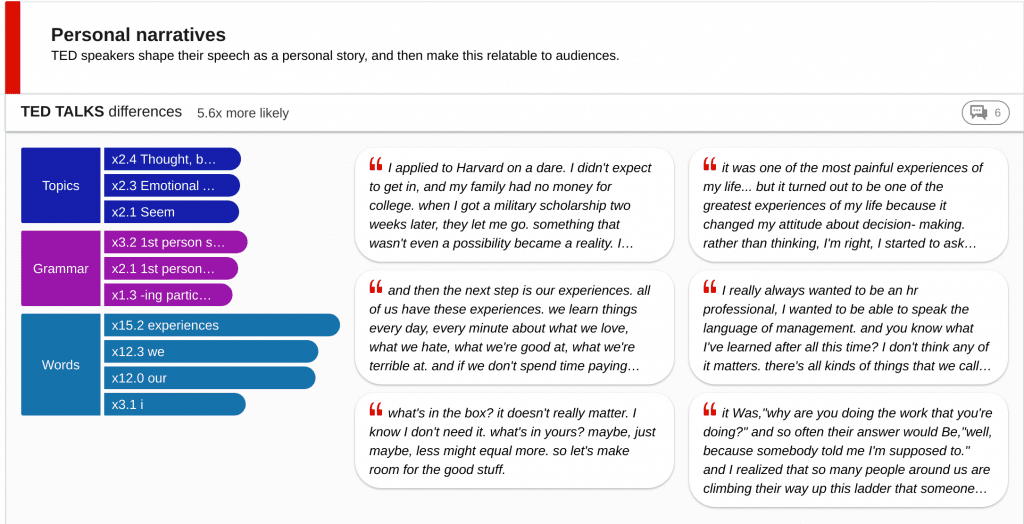

PASSAGE OF TIME
Similarly, speakers are 5.9x more likely to use temporal language throughout their talks which creates a time frame to set the narrative against. Words such as now, then and moment guide their talk and bring the listener’s attention to the passage of time.
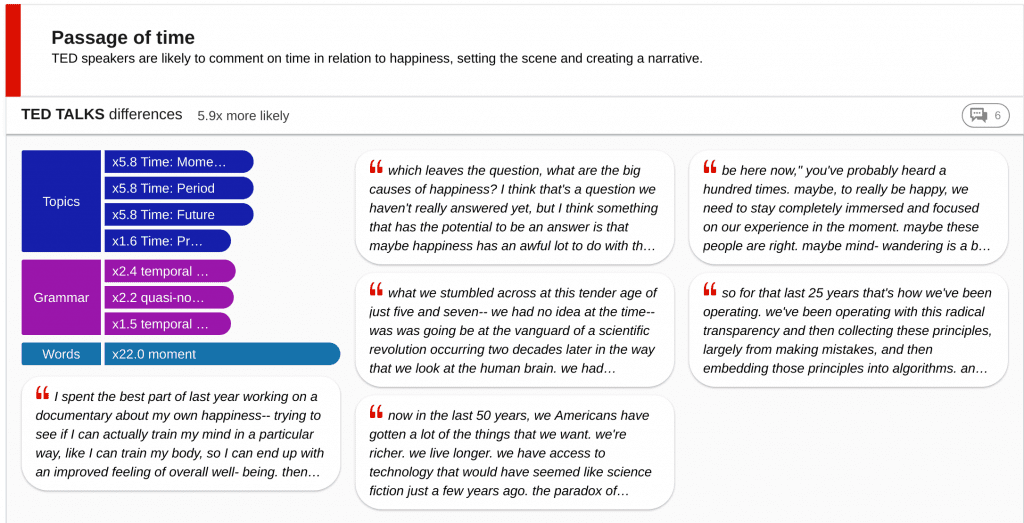

USE OF ADJECTIVES AND EMOTIONS
On a similar note, what is most inspiring about these talks is that presenters depict a better future or a better version of themselves which audiences can aspire to. They do this through the use of adjectives and emotions using words like happier, stronger and better 54.4x more than Standard English. Speakers draw on this idea of embracing change and the transformative powers of positivity.
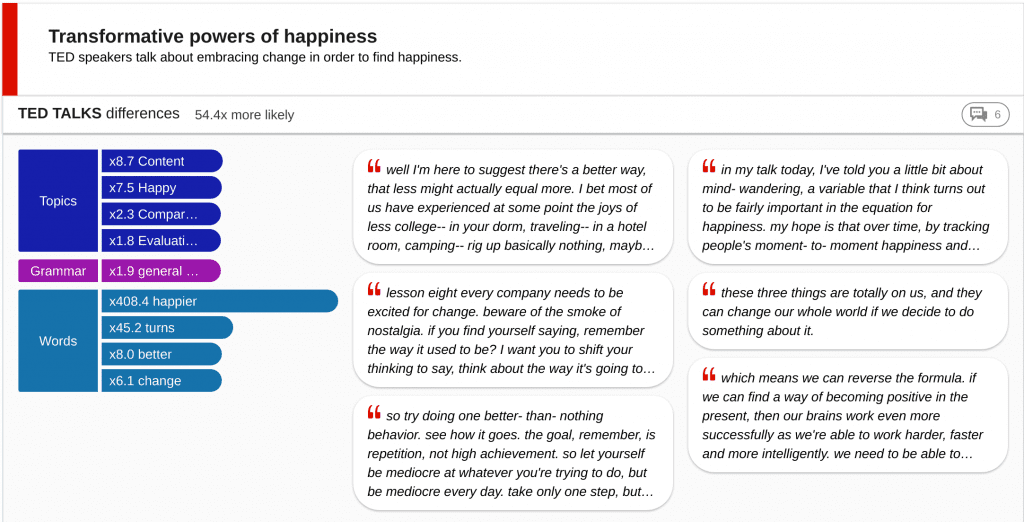

KEY THEMES OF HAPPINESS
BE INSPIRED BY PEOPLE
Throughout this sample of TED Talks, there is an overwhelming sense of how important people are to your individual happiness and success. This is true in both the personal and professional sphere. Ultimately, the people in your company are your biggest asset and will determine the success of your business. So, create a work culture that promotes collaboration and uplifts employees.
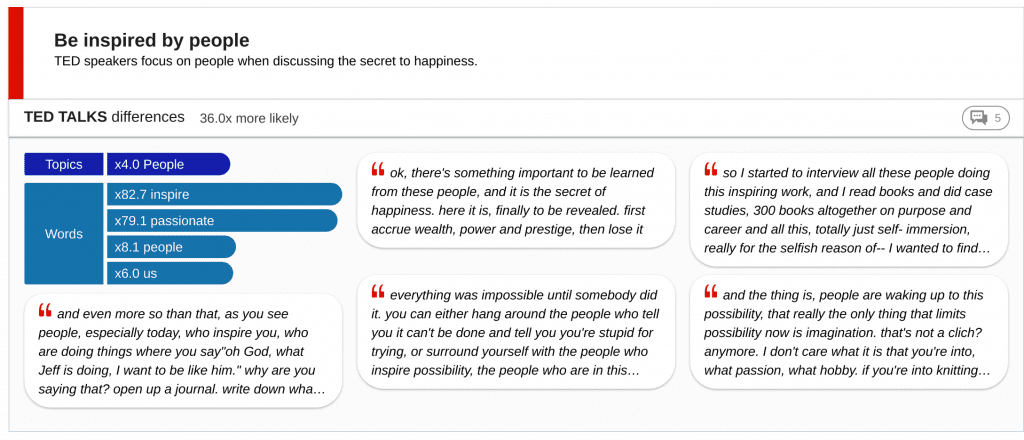

ENCOURAGEMENT
TED speakers use actionable verbs to inspire people and are 11.9x more likely to encourage their audiences that they can do anything. Nothing is impossible. Especially when happiness is concerned. This positive and emboldening language can inspire employees and help them feel supported in the workplace.
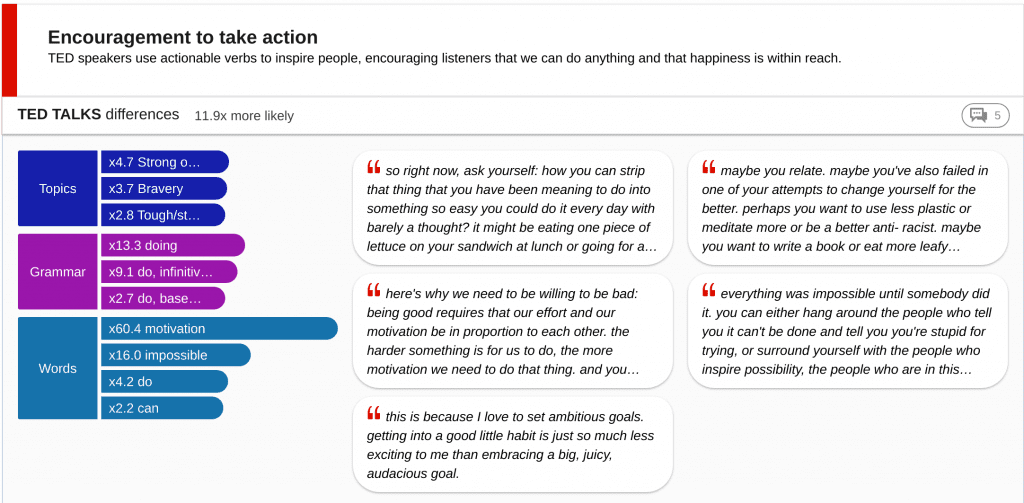

CONTINUOUS LEARNING
Finally, when talking about happiness, TED speakers highlight this idea that we are constantly learning from our own experiences. And we shouldn’t stop! In order to achieve happiness, they suggest to take life in our stride and learn from it. “Things are 100 percent in our control.”
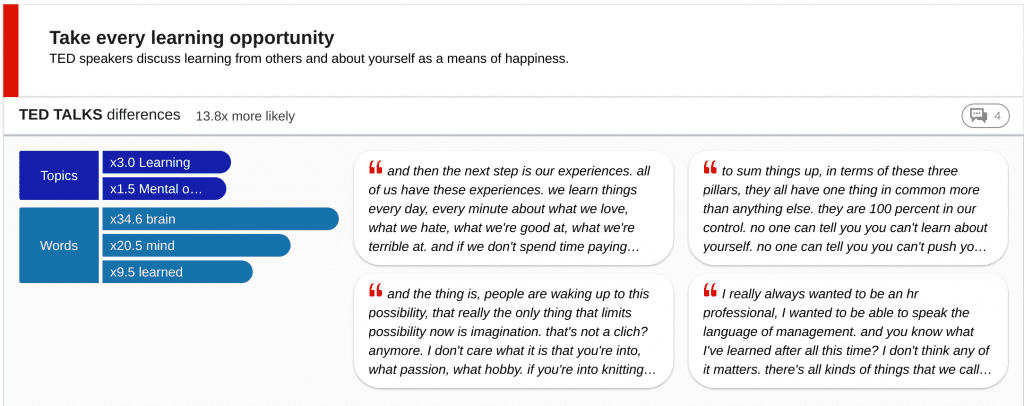

Words are powerful. They can galvanize audiences, persuade consumers and engage people within an organization. But as this analysis shows, it’s not always about how big your vocabulary is, but rather if you can use language effectively to convey your message and truly connect with your audience. Something that brands and agencies could learn from when crafting communications both internally and externally.
Relative Insight can analyze any form of language data. From social media to surveys, reviews and transcripts – the possibilities are endless!